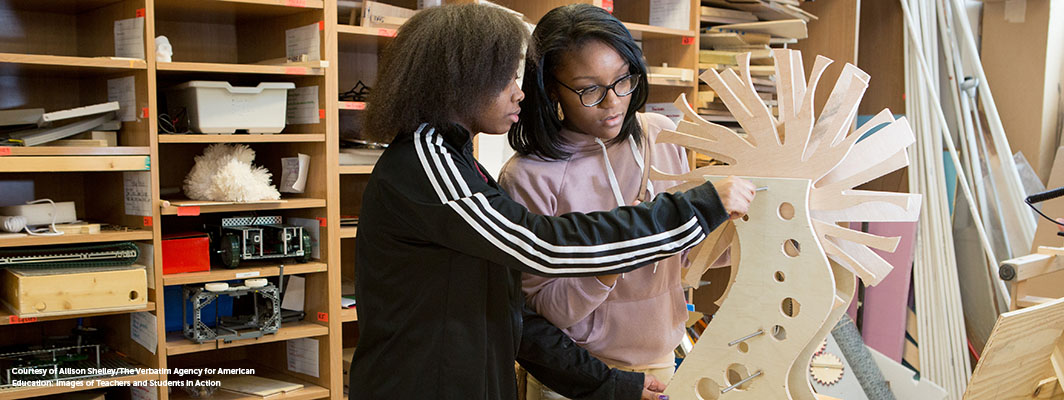Schools and teachers often use summer as a time to rethink classrooms and learning spaces. The challenge — whether it’s rearranging the furniture or planning a complete school renovation — is to make these changes in a way that goes beyond aesthetics and actually results in an environment that sparks curiosity.
Learning goals should guide the design process, not follow, says Daniel Wilson, director and principal investigator at Project Zero. “Oftentimes, exemplary school designs, model plans, or trendy images can lead schools and teachers to make premature decisions about what classrooms should look like. We want to pause that momentum and turn discussions towards the learning goals that will matter most in the community — and really get concrete about what that learning looks like in everyday interactions.”
Wilson co-leads a summer institute called Learning Environments for Tomorrow (LEFT) at the Harvard Graduate School of Education — bringing together researchers, architects, designers, and educators to explore how learning spaces can support various goals, such as playfulness, collaboration, and civic engagement. The program’s leaders — who also include David Stephen, co-founder of New Vista Design, and Ela Ben-Ur, adjunct assistant professor of design at Olin College — have devised models for guiding learning design and, along with collaborators at LEFT, have created frameworks that can help teams of school leaders, administrators, and designers from think about aspects of design.
Embarking on a school design project? Here’s what to know
Usable Knowledge sat down with Wilson to explore practical considerations of designing playful and collaborative learning spaces.
Start with questions that engage the community
Interviews and focus groups can engage students, teachers, parents, and others in reflective conversations about their values and experiences of rich and collaborative learning. Try asking:
- Who will be using the space we’re creating?
- What does playful learning look like for students and teachers?
- Does it involve collaboration? Access to materials or people? Other elements?
- What are we learning from their voices that suggest how we might support teachers and students?
Let goals and pedagogy lead the design
Once you’ve gathered insights from the community, develop a goal or pedagogy of practice that can guide your spatial design.
If you’re trying to design a space to support playful learning, think about practices that support learners’ sense of choice, wonder, and delight. (Depending on the values of the community and definitions of words like these, playful learning spaces may look and feel quite different from one another.)
Start small and develop a flexible prototype
Design projects don’t have be large overhauls that cost millions of dollars. Wilson recommends starting with “micro-interventions” — small ways to change furniture arrangements or introduce windows and objects into a space. (Check out this Usable Knowledge Piece for more ideas.)
Solicit feedback
Just because a design has been implemented doesn’t mean it’s working well. Continually check in with stakeholders to generate and incorporate feedback. Having a flexible prototype means that interventions should be flexible and easy to shift to accommodate new knowledge.
Question assumptions and inherited features
“Many of the systematic features of schooling were set in motion prior to our knowing much about learning,” Wilson says. “The idea of classes, sequential curriculum, that we’re going to have students from a particular age to another age — these were all done for a variety of anachronistic reasons. What we now know in learning science is that learning is complex, often unpredictable, and a socially developed phenomenon.”
If we want schools to support human development and learning, Wilson says, we need to begin to question some of what we’ve inherited.

